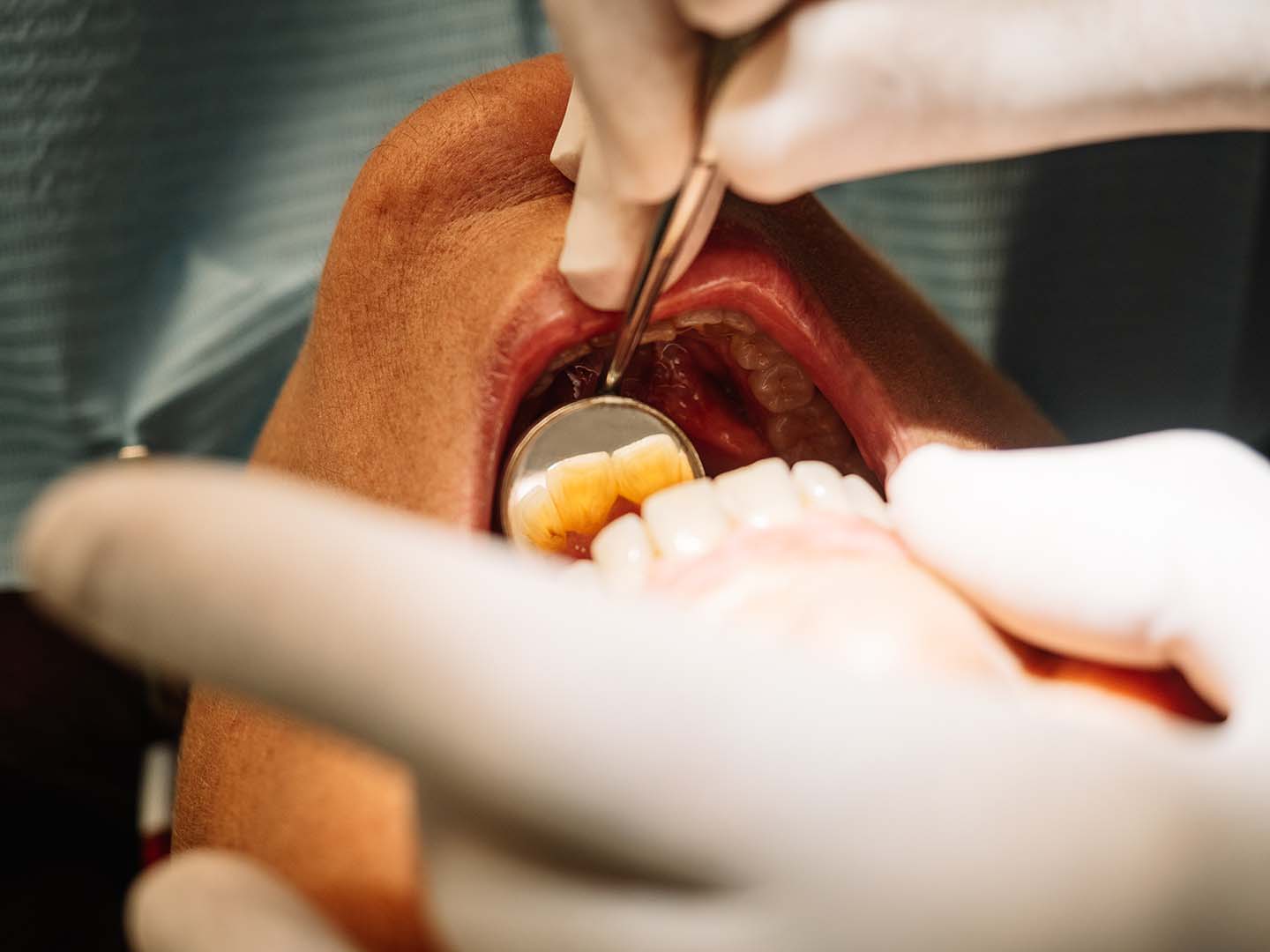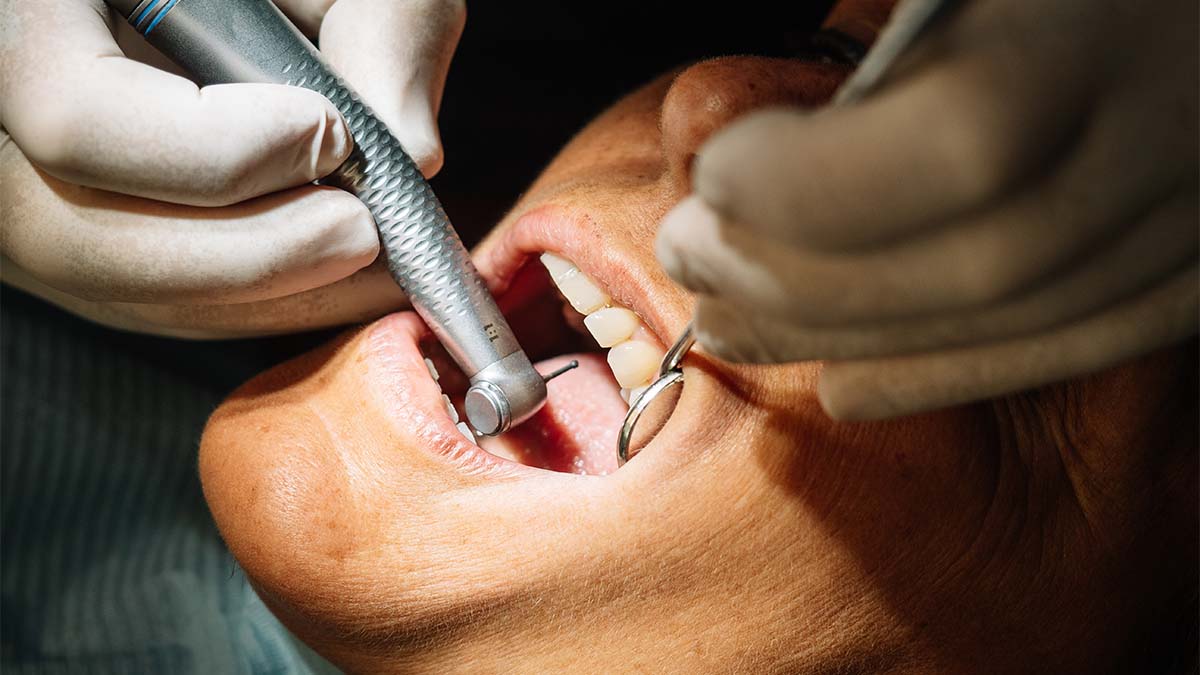When you think of “microbiome,” your mind almost always goes to the gut. Fair enough. But there is another ecosystem with an active voice in your body: the mouth. Every day we swallow saliva containing millions of microorganisms and their metabolites; part of this “crew” arrives alive in the digestive tract. At the same time, inflammation of the gums can release mediators into the circulation. The result: a two-way highway—the mouth-gut axis—where what happens at one end influences the other. Science has been mapping this connection, and the practical message is clear: healthy gums help keep the system more stable.
What exactly is the gut-mouth axis?
Think of the mouth as a port with daily departures. The local route is simple: saliva + oral biofilm travel to the stomach and intestines, carrying microorganisms and molecules that modulate the intestinal environment. The systemic route is added when there is periodontal inflammation: the gingival barrier becomes more permeable and bacteria, bacterial fragments, and pro-inflammatory cytokines pass through it into the blood. There is also the immune route—defense responses that “synchronize” between the mouth and intestine, influencing the background tone of inflammation. In everyday life, these pathways are not disconnected: persistent changes in the mouth can promote intestinal dysbiosis and vice versa, in a cycle that reinforces low-grade inflammatory signs.
Those who live in the mouth… and how they “talk” to the gut
The oral microbiota is diverse: Streptococcus, Veillonella, Actinomyces, among many others. When in balance, it coexists well with tissues. The problem arises when there is more substrate and less control: poor hygiene, reduced salivary flow, tobacco, or a diet rich in ultra-processed foods can shift the ecosystem to a more acidic and inflammatory state. Bacteria associated with periodontal disease colonize gum pockets, produce toxins, degrade proteins, and release molecules that “travel.” Through ingestion (saliva) or via the bloodstream (inflamed gums), this load reaches other tissues. This is not fiction: studies show that the composition of the oral microbiota is related to systemic metabolic and inflammatory profiles—and that traffic between the mouth and the intestine occurs every day.
Periodontitis: from “bleeding when brushing” to inflammatory amplifier
Periodontitis is a chronic inflammatory disease of the tissues supporting the teeth. It often begins with bleeding during brushing and halitosis; it progresses to pockets, loss of attachment, and, in more advanced cases, tooth mobility. More than just a “local” problem, periodontitis activates inflammatory mediators (such as IL-6 and CRP), increases transient bacteremia during mundane tasks (chewing, brushing), and can alter the profile of the microbiota that descends into the intestine. The sum total is low-intensity, persistent inflammation, which has been associated with a worse cardiometabolic profile in several observational studies: higher prevalence of hypertension, lipid changes, and other risk markers. Association is not causation, but the pattern is consistent: inflamed gums “pull” the system into a less favorable state.

Does treating periodontitis improve metabolism?
That is the practical question. Clinical trials and reviews indicate that periodontal therapy—mechanical debridement, with or without adjuvants—improves local inflammation and is associated with modest reductions in systemic markers of inflammation (e.g., C-reactive protein) and small favorable adjustments in overall cardiometabolic indicators in certain groups. “Modest” does not mean irrelevant: small but consistent effects add up when combined with a balanced diet, regular physical activity, and adequate sleep. In summary: treating the gums does not replace healthy lifestyle habits, but it can reinforce them by reducing the underlying inflammatory burden.
What the evidence suggests (and where questions remain)
The current map points in three directions:
Bidirectional axis — the mouth and gut influence each other through mechanical, systemic, and immune pathways.
Periodontitis as a modulator — periodontal inflammation is associated with worse metabolic profiles and signs of intestinal dysbiosis.
Periodontal intervention — treating the gums clinically improves oral outcomes (pockets, bleeding, halitosis) and can bring modest systemic gains.
Where are the answers lacking? In standardizing methods (quality of biofilms analyzed, follow-up times), characterizing subgroups (age, medication, diet), and quantifying the actual extent of systemic benefit over longer time frames. The direction is promising; the numbers are still being refined.
What you can do in practice
Brushing + flossing/interdental brushes (daily): reduces the bacterial load that fuels inflammation and stabilizes biofilm.
Tongue scraping (10–20 seconds): fewer sulfur compounds (better breath) and fewer unnecessary “exports” to the gut.
Microbiome-friendly routine: sleep 7–9 hours, exercise, choose full meals over snacking on acidic drinks throughout the day, limit ultra-processed foods.
Hydration: drinking water upon waking up and between meals helps neutralize pH and maintain salivary flow.
Check-ups: persistent bleeding, sensitivity, or recurring bad breath are signs that should be evaluated.
If you have cardiometabolic risk factors (e.g., excess weight, high blood pressure, lipid abnormalities), integrate oral health into your overall plan—the relationship works both ways.
Conclusion
The mouth is not an isolated “department.” It is a central hub where microbiota, immunity, and metabolism exchange signals daily. Research on the mouth-gut axis consistently links periodontitis to higher inflammatory load and less favorable metabolic profiles, and shows that treating periodontal inflammation improves oral outcomes and can contribute—modestly but usefully—to a more stable systemic environment. While science refines the numbers, there is one principle you can already apply: taking care of your gums is taking care of the rest of your body — discreetly and cumulatively.



